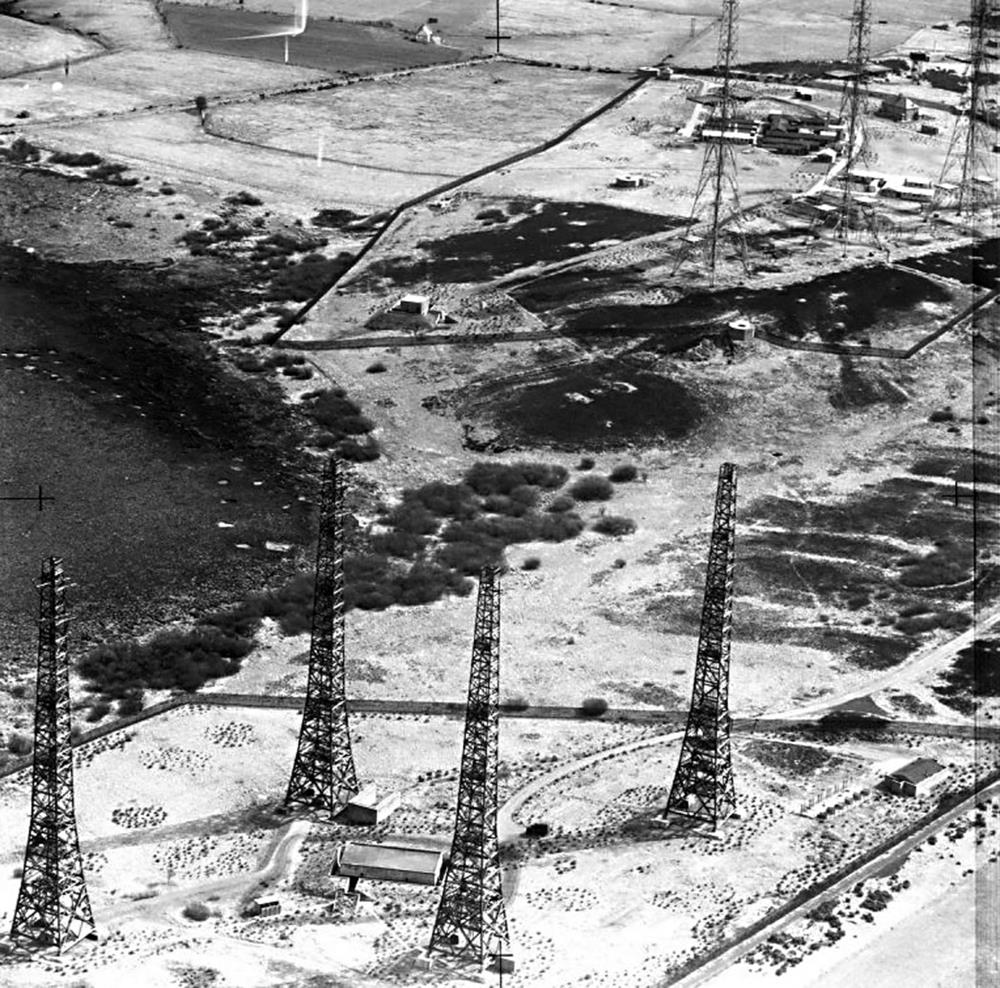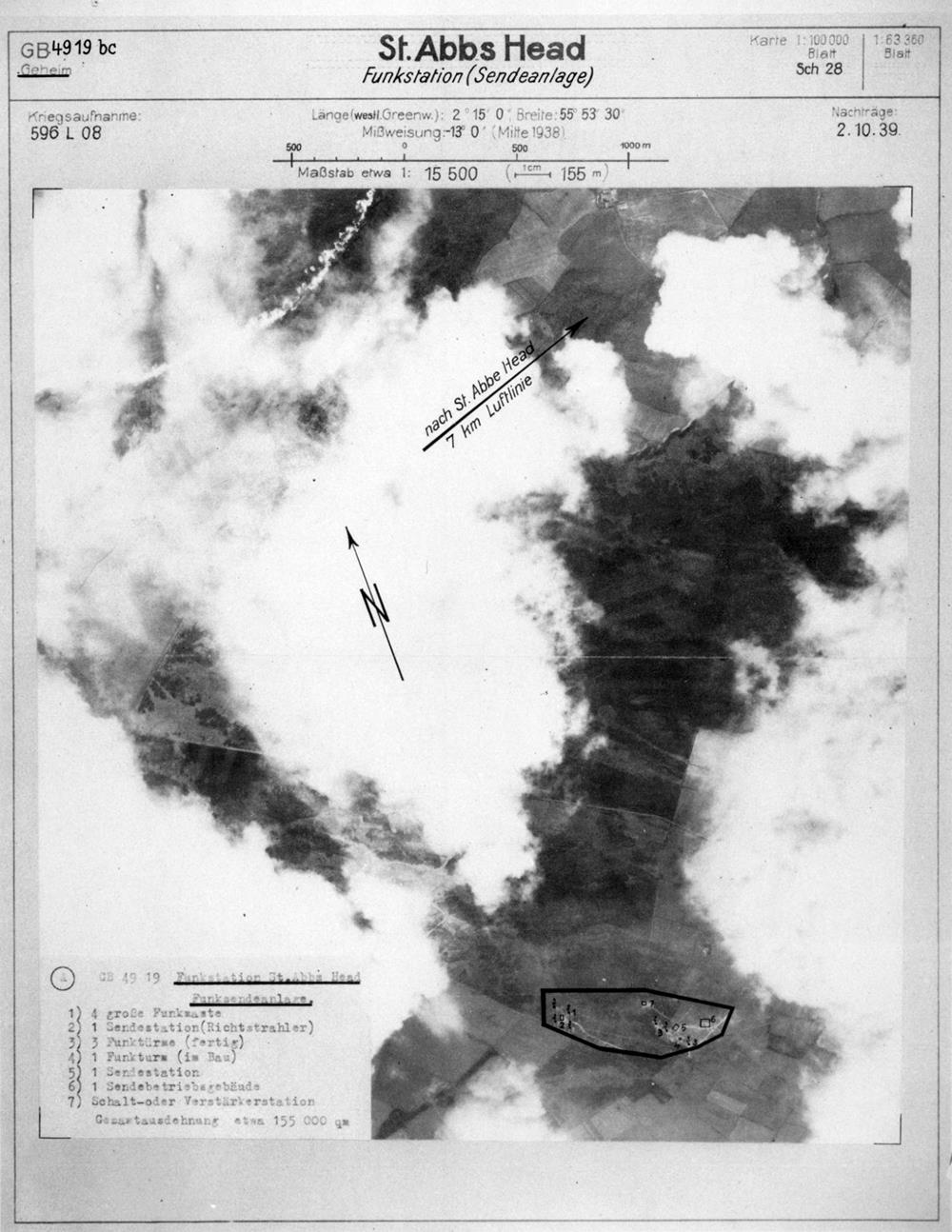First Air Raid of WWII – 7
The role of Radar
| < 6 eyes peeled | Δ Index | 8 Enemy bombers > |
By 16 October 1939, the RDF screen was not fully developed and was experiencing problems that day, although it still managed to report the raiders as they approached the coast. Over the years, attempts to apportion blame for the lateness of adequate warning and response have been directed at the Observer Corps, RDF stations and the operations room at Turnhouse.
When one considers the rapid rise in the level of aerial activity on 16 October, apportioning blame is inappropriate and all parties did all they could. Assessment of what went on in order to improve operations would have served greater purpose than to blame men who were indeed working to the best of their ability. It should also be remembered that our various defence systems had yet to be tested in times of war and were still undergoing development (and construction in some cases).
The Chain Home RDF Station at Drone Hill was situated on high ground (225m above sea level) off the A1107 Cockburnspath – Coldingham road and played a part in the defensive screen around the east coast of Britain in WWII and more specifically as far as this history is concerned, on 16 October 1939.
 Drone Hill Chain Home Radar Station
Drone Hill Chain Home Radar Station
A name for this system of detection was not immediately indicative of its method of operation.
In accordance with British concerns about security, and in order to deceive spies into believing the towers that were beginning to appear around the British coast were part of a system of radio direction finding, it was suggested that the use of the term ‘RDF (R.D. and D/F)’. Thus when German reconnaissance aircraft provided photos of the sites they believed them to be part of a radio communication system by which ground control could guide interceptors towards incoming enemy aircraft (with the RAF fighters tied to their respective airfields), when in fact they were radar sites.
In September 1943, in order to conform with United States terminology thereby preventing confusion between allies, it became known as ‘Radar’, an acronym for ‘Radio Detection and Receiving’ referred to by Watson Watt as a ‘synthetic palindrome invented by our friends the Americans’.
The technology was first developed in 1935 and by 1937 manned by trained operatives. By way of the filter room, the information received at the RDF Station was quickly passed to the sector fighter stations, giving the controllers a fairly accurate picture of all aircraft in the air covered by the RDF network. There was a six-minute time lapse between RDF observation and the plot appearing on the map. Interceptor squadrons were allocated by the group controller and scrambled by the sector controller who directed them to meet the enemy.
The Chain Home CH – Type I system consisted of four 360-foot high towers; constructed of steel girders with transmitter aerials slung between them. In addition there were four 240 foot high wooden towers on 10 which the receiving aerials were fastened.
The range of the CH system was intended to be 100 – 200 miles and to a height of 15,000 feet but the average range of 80 miles was adequate for the threat from across the Channel.
The system could not detect aircraft below 1,000 feet which would confirm the Germans’ lack of intelligence on RDF prior to the Forth raid as the approaching Luftwaffe bombers flew at a height which was easily detectable. The power supply came from the National grid and diesel or petrol generators were to be established as a back-up for each system in the event that the local power supply was cut.
The site itself covered approximately 155.000 square metres, was conspicuous and attracted the attention of German tactical photo-reconnaissance aircraft.
 Luftwaffe aerial photograph of St Abbs Funskstation [Radio Station] (Drone Hill) – note the date.
Luftwaffe aerial photograph of St Abbs Funskstation [Radio Station] (Drone Hill) – note the date.
| < 6 eyes peeled | Δ Index | 8 Enemy bombers > |